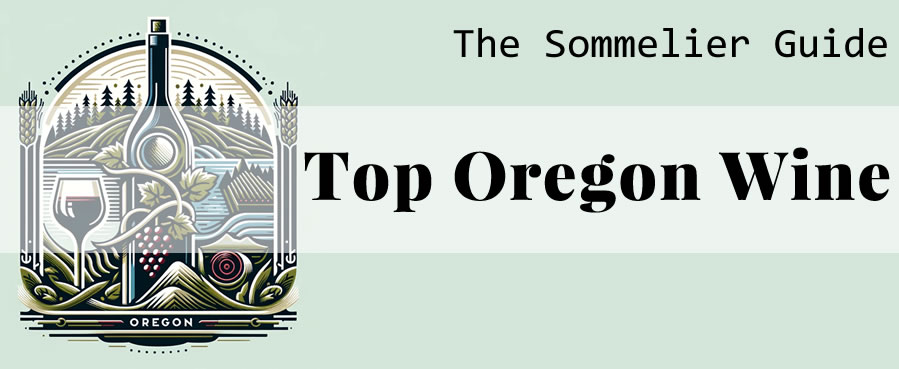
- This class has passed.
Willamette & Beyond: Luxury Oregon Wine
Thursday, May 23 from 7:30 pm to 9:00 pm

Become a member for $1 and save 20% off tuition.
Welcome to an immersive journey through the heart of Oregon’s wine country, where each sip reveals the story of a land sculpted by ancient seas, cataclysmic floods, and the delicate dance with climate change. As we explore the nuanced expressions of Pinot Noir, Chardonnay, and beyond, we’ll discover how Oregon’s winemakers harness the unique terroir of the Willamette Valley and Southern Oregon to craft wines of exceptional quality and character. From the rich, volcanic soils of the Dundee Hills to the wind-swept terraces of the Applegate Valley, prepare to taste the pioneering spirit and innovative adaptability that define Oregon’s wine legacy.
The Foundation of Willamette’s Wine Prestige
The Willamette Valley, with its past under the sea 12 million years ago, has been sculpted by the forces of nature, notably the Missoula Floods, into a fertile bed that’s as varied as it is rich. This land, shadowed from rain by the Coastal Range and cradled within its foothills, boasts south-facing slopes starting at elevations of 200+ feet, ideal for viticulture. Here, the soil is not just the ground on which its vines stand but a testament to a history that lends itself to the cultivation of grapes that are as unique as their terroir. Amidst this natural bounty, a tapestry of commercial grass seed fields in the valleys adds to the region’s agrarian diversity.
The first flight of wines from Willamette, including Ponzi’s 2018 Chardonnay Reserve and selections like Eyrie Trousseau or Day Wines’ “Infinite Air Castles” Gamay/Dolcetto, offers a glimpse into Oregon’s winemaking prowess. These wines reflect a legacy that, while subject to survivorship bias, demonstrates a commitment to quality, underscored by a scoring system that ranks these offerings highly.
Pinot Noir and the Dance with Climate
Oregon’s Pinot Noir, once perched on the cooler limits of viticulture in the 60s and 70s, now finds itself in the heart of its climate niche, thanks to a warming trend that has seen a steady increase in temperatures since 1980. This shift from a Winkler Region I to a Region II classification signifies not just a change in numbers but a profound impact on the viticultural calendar and the character of the wine itself. The harvests now begin mid-September, three weeks earlier than a decade ago, marking a significant adaptation to climate change. However, this adaptation comes with a forewarning: the quality of Pinot Noir may decline in the next 20 years, prompting some to diversify their vineyards with varietals like Viognier and Syrah as a buffer against future climate shifts.
The second flight, featuring Colene Clemens’ “Margo” Pinot Noir and St. Innocent’s Pinot Noir from Freedom Hill Vineyard, illustrates the evolution of Oregon’s Pinot Noir. From delicate and Burgundy-esque to rich, soft, and full-bodied, these wines signify a transition influenced by more than just temperature changes. They are the outcome of a holistic shift in the region’s viticulture, including changes in soil management, varietal selection, and winemaking techniques such as chapitalization and acidification, adapting to both environmental changes and market demands.
A Diverse Terroir: Beyond Willamette
Oregon’s wine regions extend beyond the Willamette Valley, each with its unique characteristics. The Tualatin Hills, with their Laurelwood loess rich in iron, contribute to robust berry ripening and vine health. The Yamhill-Carlton District’s dry, sandy loam, and Ribbon Ridge’s marine sedimentary soils each offer distinct advantages to grape cultivation. These variations in soil, along with differences in elevation, sunlight, and temperature, contribute to the diverse wine portfolio of Oregon.
The third flight of wines, including Abacela’s “Fiesta” Tempranillo from the Umpqua Valley and Ovum’s “Old Vine” Red Blend from the Columbia Gorge, showcases the adaptability and experimental spirit of Oregon’s winemakers. Southern Oregon, once struggling to ripen certain varietals, now excels with Tempranillo, Cab Franc, Merlot, and Grenache, thanks to a warming climate. The region’s proactive adaptations, such as moving to an open canopy for more shade, underscore the industry’s commitment to quality amid changing conditions.
Oregon’s Wine Future: Adaptation and Innovation
Oregon’s wine industry stands at a crossroads of tradition and innovation. As climate change continues to alter the viticultural landscape, Oregon’s winemakers are not just responding but anticipating, experimenting with new varietals, and refining their practices to ensure the legacy and quality of their wines for generations to come. This journey, from ancient seas to modern vineyards, reflects a resilience and creativity that are the hallmarks of Oregon wines—a testament to both the land and the people who cultivate it.
